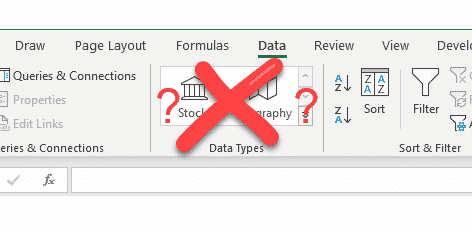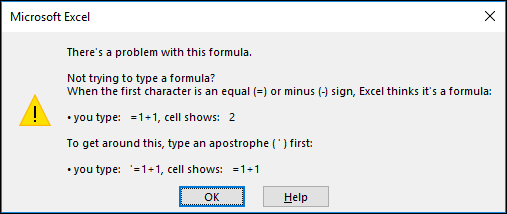The Buzz on Excel Links Not Working
The smart Trick of Excel Links Not Working That Nobody is Discussing
Table of ContentsThe Facts About Excel Links Not Working UncoveredThe Ultimate Guide To Excel Links Not WorkingExamine This Report on Excel Links Not WorkingThe Of Excel Links Not WorkingGet This Report about Excel Links Not Working

However, selection computation functions like either can not handle entire column referrals or compute all the cells in the column. User-defined features do not automatically identify the last-used row in the column and, therefore, regularly determine whole column recommendations inefficiently. Nonetheless, it is simple to program user-defined features so that they acknowledge the last-used row (excel links not working).

The smart Trick of Excel Links Not Working That Nobody is Talking About
Using the formula for a dynamic array is typically better to the formula because has the disadvantage of being an unpredictable function that will certainly be determined at every recalculation. Performance decreases since the function inside the dynamic variety formula should analyze many rows. You can reduce this efficiency decline by saving the part of the formula in a separate cell or defined name, and after that describing the cell or name in the dynamic variety: Counts!z1=COUNTA(Sheet1!$A:$A) Offset, Dynamic, Variety=OFFSET(Sheet1!$A$ 1,0,0, Counts!$Z$ 1,1) Index, Dynamic, Array=Sheet1!$A$ 1: INDEX(Sheet1!$A:$A, Counts!$Z$ 1+ROW(Sheet1!$A$ 1) - 1,1) You can additionally use features such as to create vibrant arrays, yet is volatile and always determines single-threaded.
Using numerous vibrant varieties within a single column calls for special-purpose checking features. Utilizing numerous dynamic arrays can lower efficiency. In Office 365 version 1809 and later, Excel's VLOOKUP, HLOOKUP, as well as suit for precise match on unsorted data is much faster than ever when looking up multiple columns (or rows with HLOOKUP) from the very same table array.
If you make use of the precise suit option, the estimation time for the function is symmetrical to the number of cells scanned before a suit is found. Lookup time making use of the approximate match alternatives of,, as well as on arranged data is quick and also is not substantially increased find out here now by the size of the range you are looking up.
9 Easy Facts About Excel Links Not Working Described
Make certain that you understand the match-type and range-lookup choices in,, as well as. The complying with code example shows the syntax for the function. SUIT(lookup worth, lookup variety, matchtype) returns the biggest match less than or equivalent to the lookup worth when the lookup selection is arranged ascending (approximate match).
The default option is approximate match sorted rising. The adhering to code example reveals the syntax for the as well as functions.
VLOOKUP(lookup value, table variety, go col index num, range-lookup) HLOOKUP(lookup value, table array, row index num, range-lookup) returns the biggest match less than or equivalent to the lookup value (approximate match). Table range should be sorted rising.
The 25-Second Trick For Excel Links Not Working
If your data is sorted, yet you want a precise suit, see Use 2 lookups for arranged information with missing values. Attempt making use of the and works rather of. Is somewhat quicker (about 5 percent faster), simpler, as well as utilizes less memory than a mix of as well as, or, the added adaptability that and also offer typically allows you to significantly save time.
The function is fast and is a non-volatile function, which speeds up recalculation. The function is also fast; nevertheless, it is an unstable function, as well as it in some cases substantially enhances the time taken to process the estimation chain.$A$ 2:$F$ 1000, SUIT(A1,$A$ 1:$A$ 1000,0),3) Since precise suit lookups can be sluggish, consider the following alternatives for boosting performance: Use one worksheet.
When you can, the data first (is rapid), and also make use of approximate match. When you should utilize an exact match lookup, restrict the series of cells to be checked to a minimum. Usage tables and also organized referrals or dynamic range names instead than referring to a large number of rows or columns.
4 Easy Facts About Excel Links Not Working Explained
2 approximate suits are dramatically faster than one specific suit for a lookup over more than a few rows. (The breakeven point has to do with 10-20 rows.) If you can arrange your data yet still can not make use of approximate match because you can not make sure that the worth you are searching for exists in the lookup array, you can look these up utilize this formula: IF(VLOOKUP(lookup_val, lookup_array,1, Real)=lookup_val, _ VLOOKUP(lookup_val, lookup_array, column, True), "notexist") The first component of the formula functions by doing an approximate lookup on the lookup column itself.
VLOOKUP(lookup_val, lookup_array, column, True) If the solution from the lookup column did not match the lookup value, you have a missing value, as well as the formula returns "notexist". Be mindful that if you search for a worth smaller sized than the tiniest value in the listing, you get a mistake. You can manage this mistake by using, or by adding a little test worth to the checklist.
Beginning with Excel 2007, you can utilize the feature, which is both easy as well as rapid. IF IFERROR(VLOOKUP(lookupval, table, 2 FALSE),0) In earlier versions, a simple however sluggish means is to utilize a function which contains two lookups. IF(ISNA(VLOOKUP(lookupval, table,2, FALSE)),0, _ VLOOKUP(lookupval, table,2, FALSE)) You can stay clear of the dual precise lookup if you utilize exact once, store the lead to a cell, and afterwards check the result prior to doing an.